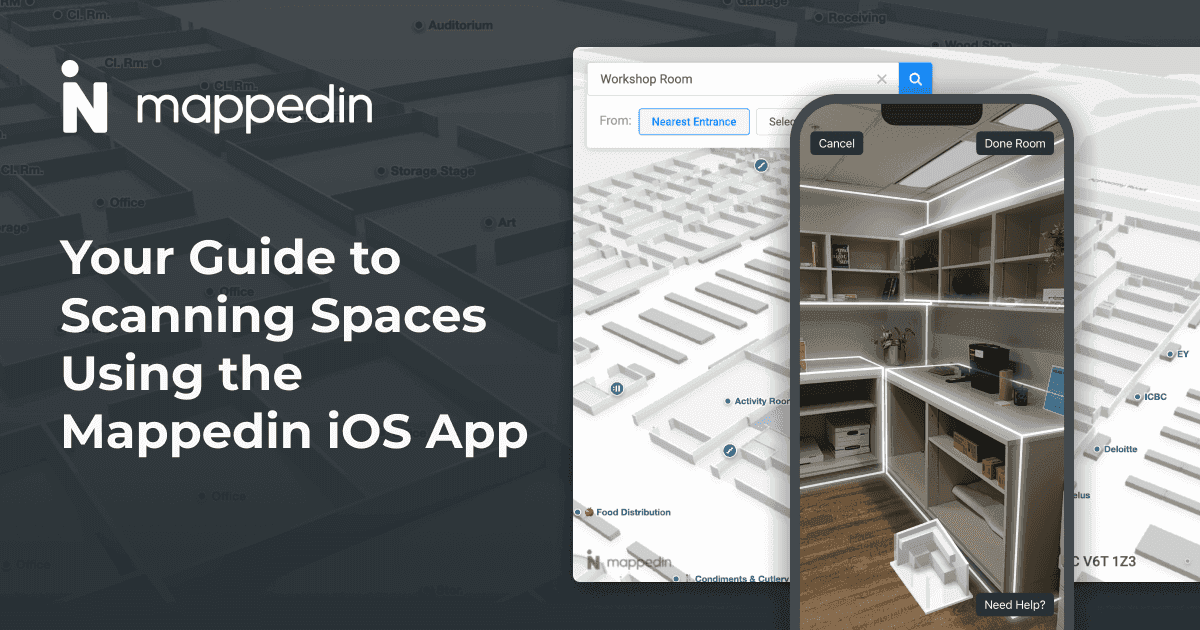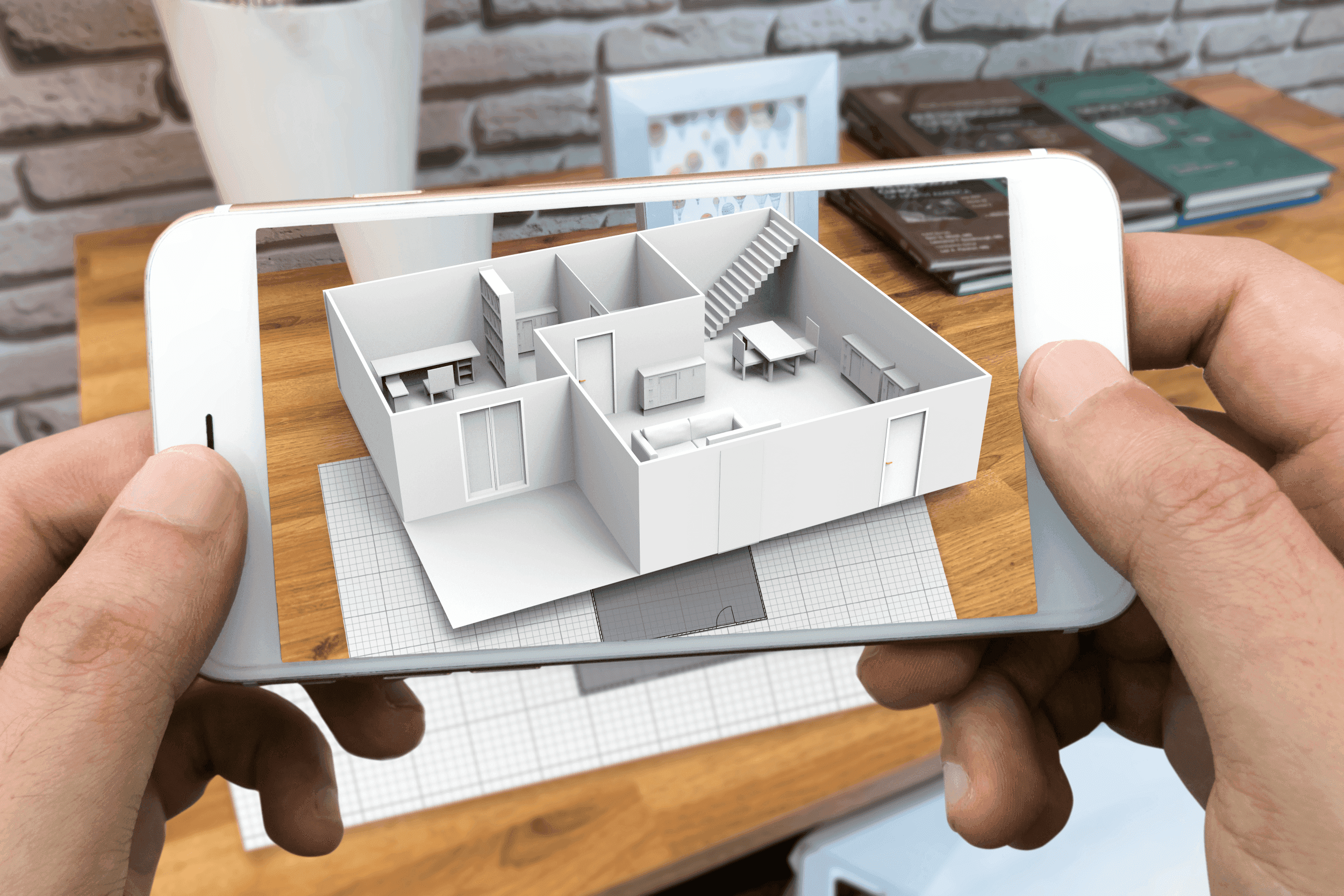As indoor mapping begins to catch up with its outdoor counterpart in terms of widespread usage, it is important that businesses understand the wide variety of uses in addition to indoor navigation. From logistics and operations to safety, and even sales, there are many unique uses for indoor mapping technology.
Apple augmented reality kit
Apple’s Augmented Reality frameworks, ARKit and RealityKit, can change the way we think about indoor mapping. Apple ARKit makes it easy to build an AR experience by combining device motion tracking, camera scene capture, advanced scene processing, and display conveniences. Apple RealityKit uses information provided by the ARKit framework to integrate virtual objects into the real world. Together, these powerful frameworks make it faster and easier than ever before to create AR experiences.
With Apple Object Capture, Apple device users can create 3D representations of real-world objects using an iPhone or iPad. Object Capture uses photogrammetry algorithms to turn a series of pictures taken on your device into 3D models that are optimized for augmented reality (AR). You can simply take pictures of an object, and leverage the Object Capture API to turn it into a high-quality digital asset.

You can also turn environments into 3D models. Powered by ARKit, the Apple RoomPlan API enables you to create 3D models of a room that include dimensions and furniture. Using an app that harnesses Apple’s RoomPlan API, you can scan rooms to create a 3D model of a room from which a floor plan can be derived.
This technology is changing the way we think about indoor mapping by providing a new and alternative way of creating an initial map. For several applications, you need a building floor plan or blueprint to start building a mapping and wayfinding experience. With Apple’s Augmented Reality Kit, you can now create one with an Apple device.
Apple reality kit tutorial
Apple’s RealityKit was built specifically for augmented reality. It includes Swift APIs, ARKit integration, physics-based rendering, animations, spatial audio, and more. Apple provides documentation, sample code, videos, and forums to help you create unique augmented reality applications. You can browse the latest documentation here. You can also find various tutorials online that detail the step-by-step process of building an AR app with RealityKit.
Is Apple coming out with VR?
Apple has built frameworks for augmented reality, but have not released anything related to virtual reality (VR). With the rise of augmented reality (AR) and virtual reality (VR) experiences, it is likely that Apple will release a VR product, though nothing is confirmed. However, there is speculation that Apple is reportedly working on a virtual reality (VR) headset.
Visualization
At their core, indoor maps are used to provide context, display visual markers, and guide users along the best routes to their desired destination. While this can be achieved with a simple and static 2D map, digital interactive maps unleash a variety of new uses for indoor mapping software.

Foot traffic heat maps
An interactive indoor map paired with a heat map can yield valuable business insights. A heat map helps you visualize data using a system of color-coding that represents different values. When used to analyze foot traffic, a dark-to-light color scale would display the venue areas that gain more attention with a dark color, and the areas that gain less attention with a light color.
This enables property owners and managers to gather information on which areas of the venue are seeing the most traffic, exposing ways that the business can optimize its space and improve the spatial layout of services to maximize sales. For instance, if you notice that people are gathering around specific areas of your mall, you can monetize these spaces by adding paid vendors or amenities.
You can also use these insights to identify potential areas for investment, create targeted content and promotions, and more. If you notice that certain areas of your venue are being ignored, you can relocate existing services to ensure that they’re in the most optimal location to gain attention. By combining indoor mapping technology with heat maps, you can visualize the foot traffic in your venue much easier.
Heat map wi-fi app
A Wi-Fi heat map enables you to visualize the real-time signal strength and coverage of a wireless infrastructure overlaid on a map. Using our interactive indoor map, you can layer a heat map on top to paint a clear picture of your network and Wi-Fi access points.
This can help you understand which areas lack coverage, and which areas have strong signal strength. These insights enable you to identify any problems, fix Wi-Fi dead zones, improve signal strength and coverage, and more.
Indoor navigation
An indoor mapping platform provides flexibility to users. Regardless if someone is searching for a specific destination (“Apple Store”) or any location that meets a certain criteria (“technology”), or if they are unsure of their needs and want to familiarize themselves within an indoor space, 3D interactive maps help to provide this context. Indoor mapping software also provides flexibility in how users can access it. From internet-based maps available across mobile devices, to computers, or touchscreen kiosks and directories, gone are the days of tracking down single static signage.

At first, a business might only create maps of their venues in order to provide indoor navigation, but with a location-based technology stack, maps can be integrated with indoor positioning, real time data, and other external systems to tap into additional services. Indoor navigation apps allow users to access location and spatial data, along with detailed directions, on-the-go.
Logistics & operations
Indoor navigation apps are often associated with public-facing applications and their purpose limited to the previously mentioned indoor navigation and wayfinding. Some of the most useful applications of indoor mapping technology, however, are used in the background and as one component of a larger ecosystem. One of these ecosystems includes internal building functions, such as tracking, data integrations, line management, and other logistical items.
Asset tracking
Asset Tracking is one of the unique ways that businesses can use digital indoor mapping solutions. By combining indoor positioning systems with a platform to visualize the venue and its layout, logistics teams can access the exact position of where assets are located around the building. Whether tracking inventory in a warehouse, medical equipment or personnel in healthcare facilities, various technology in a school or office, or documents on a construction site, indoor maps enable these experiences. Employers can make these visualizations available through workplace mobile apps and in turn, allow workers to quickly locate assets with turn-by-turn directions. Mobile app users can even enable location sharing so that they themselves can be found effortlessly.
Data integrations
Depending on the venue type or industry, there may be an abundance of location data - both for internal staff or external visitors. Without maps or a way to sort or display this information, the data can be easily lost or misrepresented. In an airport, for example, travellers must first locate airport parking, then dynamic displays in order to find their boarding gate. From there, they must follow static signage to locate that gate and hope that their destination hasn’t changed while they travel from Point A to Point B. One way to alleviate this is by integrating external data sources with indoor mapping, wherein users can access up-to-date flight details through a mobile app, for example, and populate the most efficient route from the same platform.
Another example of this is an office building or similar corporate environment. Particularly as more offices move to a hybrid-model, employees may need more transparency around what resources are available to them in order to work efficiently. Everything from office supplies and technology, to meeting room availability, or hot desk reservations. With indoor mapping and smart building navigation apps, employees can access all of this data and use one integrated system in order to make requests or reservations across their workplace.
Line management
When integrated with line management data, indoor mapping software can display location traffic data including the number of people in the virtual queue and the estimated wait time. In a mall, for example, shoppers can view this information directly through the interactive map, access a booking link, and add themselves to the virtual queue, helping to reduce crowds and lineups at physical locations. The same technology can be applied to reservation links, allowing visitors to make an appointment or reservation through maps online, before they arrive.

Planning
In addition to logistical use cases, an indoor navigation app can also be used to gather business data and improve processes, workflows, and efficiencies across indoor facilities. Through visualization, businesses can better understand how their spaces are being used and allocate resources accordingly.
Space planning
An indoor mapping engine paired with foot traffic data can assist in internal decision making. Once businesses understand how their space is being used and can identify areas of congestion, directional movements, and so on, floor layouts can be adapted for the optimal flow. With a heat map, property owners and managers can visualize these movements: how visitors are travelling through their venue and where they are spending the most time. This can help make informed decisions on cleaning, sanitation, where signage should be placed, and so on.
Similarly, indoor facilities that measure and restrict access or occupancy can use an indoor mapping platform as a way to visualize this data. For example, if an office workspace has a capacity limit of 10 individuals, that area may appear red on the digital map to indicate to others that the limit has been reached.
Cleaning & maintenance
In the wake of the COVID-19 pandemic, it is more important now than ever for indoor venues to adhere to strict cleaning policies and schedules. By integrating a digital map or navigation app into a workplace management system, for example, facilities teams can enable efficient workflows for cleaning throughout the building. One approach to this involves allowing employees to make requests or submit work order forms. Along with helpful details, users can include an image or video when necessary and pin the precise location on the indoor map, making it easy for workplace teams to locate the problem area. Even after an issue has been resolved, teams can review valuable analytics such as real-time status updates or average time to resolution.

Another approach to planning building-wide cleaning and maintenance with an indoor navigation system is to apply automation. By integrating other location-based technologies such as indoor positioning or sensors with an indoor map, facilities teams can create automatically triggered notifications. For example, once a meeting room has been used a certain number of times, or a washroom has had over 10 occupants, a member of the cleaning staff can be notified and arrive to sanitize the room.
Safety
Kept up-to-date and used correctly, indoor maps can be a fundamental safety tool. Along with assisting first responders in emergency situations, a number of the use cases for digital maps discussed in this article can improve safety across indoor venues. Space planning, social distancing measures, and cleaning and maintenance for example, are all particularly important in the wake of the COVID-19 pandemic to ensure social distancing and assist with dynamically changing protocols.
First responders
In an emergency when timing is critical, having the most up-to-date mapping data can be the difference between tragedy and victory. It can take time for first responders to locate important information such as building access points or stairwells so to ensure the safety of visitors and employees, businesses need an easy way to share accurate digital maps of their building with emergency services.
Through indoor mapping technology, indoor venues can prepare for incidents by annotating the map with important location data such as emergency exits, fire extinguishers, defibrillators, water sources or fire hoses, and so on. If emergency services do appear on site, digital maps can quickly provide them with crucial information.

Sales enablement
While not an obvious use case, businesses that create indoor maps can use them for sales enablement and advertising. Venues can program ads in specific locations across the building, combine indoor positioning with mobile apps, and develop leasing maps as methods to drive sales. In their digital form, indoor maps are a great platform for layering additional experiences such as these.
Leasing
Shopping malls, outlet centres, train stations, and office complexes are just a few of the venue types that can take advantage of digital and interactive leasing maps. Through an indoor mapping platform, property managers can showcase available units directly through the map, therefore providing potential tenants with a visual on the unit’s location in the context of the entire building. Important data such as square footage, price, agent contact information, and more can be integrated alongside the map, providing an end-to-end experience and this experience can be accessed across the web, a tablet, or mobile device.
Advertising
There are a variety of ways to incorporate advertising with indoor mapping, or in conjunction with indoor positioning. The first method is directly through the map, either by annotating “new” and “coming soon” locations, or by showcasing promotions when a user clicks on a specific location. Venues that have enabled indoor positioning can also take advantage of proximity marketing which relies on a user’s current position in order to send relevant messaging. If, for example, a user is navigating through an airport and their flight gets delayed, proximity marketing would enable the airport to send a message to the user about their flight change and provide a 10% discount off a meal at a nearby restaurant.

Businesses can incorporate Digital out of Home (DooH) advertising on kiosk signage across the venue, along with the interactive venue map. This tactic of advertising provides a positive customer experience, as the indoor mapping engine can quickly populate directions from a user's position to the product or location being advertised. Contact us to learn more.
In the digital age, any information can be made available in a matter of seconds. Why should indoor maps be any different? For property owners and managers, digital indoor maps are a visualization tool, they collect and display important data, they can act as a stream for additional revenue, and so much more.
What if I told you that these unique use cases are just the beginning?
Mappedin works with thousands of properties around the world, and powers indoor maps across 755+ million square feet of premium indoor space. If you are interested in improving your venue with indoor navigation across kiosk, web, or mobile apps, contact us today.
How to create indoor maps for free
To create your indoor maps, you can choose innovative mapping providers like Mappedin whose technology is designed to integrate with an indoor positioning system app or indoor GPS app. Indoor navigation maps not only provide convenience for users, but also for the companies managing the property. Sign up and start mapping for free. For information on Enterprise pricing, feel free to reach out for a quote.
Share


